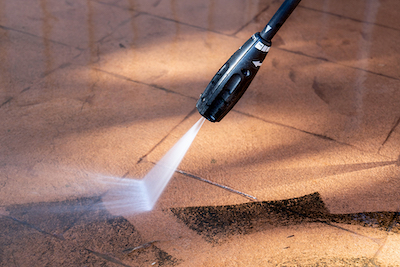As winter approaches, many people find themselves faced with the annual dilemma of choosing between a snow shovel and a snow blower to clear their driveways and walkways. Both tools have their advantages and disadvantages, and the choice depends on various factors such as the amount of snowfall, the size of the area to be cleared, and personal preferences. This article will explore the pros and cons of each tool, helping you make an informed decision for your winter snow removal needs.
Snow Shovel
A snow shovel is a traditional, manual tool that has been used for centuries to remove snow from paths, driveways, and other surfaces. It is a simple yet effective device consisting of a blade, a handle, and sometimes a bent shaft to make the task more comfortable.
Pros of Snow Shovels
- Affordability: Snow shovels are generally inexpensive, with prices ranging from $10 to $50, depending on the materials and design. This makes them an accessible choice for those on a budget or for those who only need to clear snow occasionally.
- Portability and storage: Snow shovels are lightweight and easy to transport. Their simple design also makes them easy to store, taking up minimal space in a garage or storage shed.
- Exercise: Shoveling snow is a physical activity that can help burn calories and maintain cardiovascular fitness during the winter months. It can be an effective way to stay active and enjoy the outdoors in colder weather.
- Environmentally friendly: Snow shovels do not require any fuel or electricity, making them an eco-friendly option for snow removal.
Cons of Snow Shovels
- Time-consuming: Shoveling snow manually can be labor-intensive and time-consuming, especially in areas with heavy snowfall or larger properties.
- Physical strain: Snow shoveling can be hard on the body, particularly on the back, shoulders, and wrists. Incorrect technique or overexertion can lead to injuries, such as strains or sprains.
- Limited effectiveness: Snow shovels may not be the best option for deep or heavy snow, as the manual effort required increases exponentially with the depth and weight of the snow.
Snow Blower
A snow blower, also known as a snow thrower, is a motorized device that removes snow by blowing it out of the way. Snow blowers come in various sizes and types, including electric, gas-powered, single-stage, and two-stage models.
Pros of Snow Blowers
- Efficiency: Snow blowers can clear snow much faster than shoveling, saving time and effort. They are particularly useful for those with large properties or frequent heavy snowfall.
- Ease of use: Operating a snow blower typically requires less physical exertion than shoveling, reducing the risk of injury and making it a more comfortable option for many people.
- Clearing depth: Snow blowers are capable of handling deeper and heavier snow than shovels, making them a more effective choice for areas with harsh winters.
- Versatility: Snow blowers are available in various sizes and power levels, making it easy to find a model that suits your specific needs.
Cons of Snow Blowers
- Cost: Snow blowers are more expensive than shovels, with prices ranging from $100 for a small electric model to over $1,000 for a high-end gas-powered machine. This initial investment may not be feasible for everyone.
- Storage and portability: Snow blowers are larger and heavier than shovels, making them more challenging to transport and store. They require more space in a garage or shed, and moving them around can be difficult.
- Maintenance and fuel: Snow blowers require regular maintenance, such as oil changes, spark plug replacement, and periodic tune-ups, especially for gas-powered models. Additionally, gas-powered blowers need fuel, adding to the ongoing cost of operation.
- Environmental impact: Gas-powered snow blowers emit greenhouse gases and can contribute to air and noise pollution. Electric models are more environmentally friendly, but they still consume electricity, which may be generated from non-renewable sources.
- Learning curve: Operating a snow blower may require some practice and knowledge of the machine’s controls and functions. This may be intimidating for first-time users, especially those who are not mechanically inclined.
Factors to Consider When Choosing Between a Snow Shovel and Snow Blower
- Snowfall amounts: If you live in an area with light or infrequent snowfall, a snow shovel might be sufficient for your needs. However, if you experience heavy snowfall or frequent storms, a snow blower will save you time and effort.
- Property size: For small driveways and walkways, a snow shovel may be adequate. However, if you have a large driveway or multiple pathways to clear, a snow blower will make the job quicker and easier.
- Physical abilities and health: If you have any physical limitations or health concerns that make manual snow removal difficult or risky, a snow blower may be a safer and more comfortable option.
- Budget: Consider your budget when deciding between a snow shovel and a snow blower. If cost is a primary concern, a shovel is the more affordable choice. However, if you have the budget and snow removal is a significant chore, investing in a snow blower may be worthwhile.
- Environmental impact: If you prioritize eco-friendliness, a snow shovel is the greener choice. Electric snow blowers are also a more environmentally friendly option than gas-powered models.
The decision between a snow shovel and a snow blower ultimately depends on your specific needs and priorities. Snow shovels are affordable, portable, and eco-friendly, making them an excellent choice for light snowfall and smaller properties. On the other hand, snow blowers provide efficiency, ease of use, and versatility, making them ideal for heavy snowfall, larger areas, and those with physical limitations.
Take the time to assess your snow removal requirements, budget, and personal preferences to make the best choice for your winter snow-clearing needs. Whichever tool you choose, remember to follow safety precautions and proper techniques to minimize the risk of injury and maximize your snow removal effectiveness.












